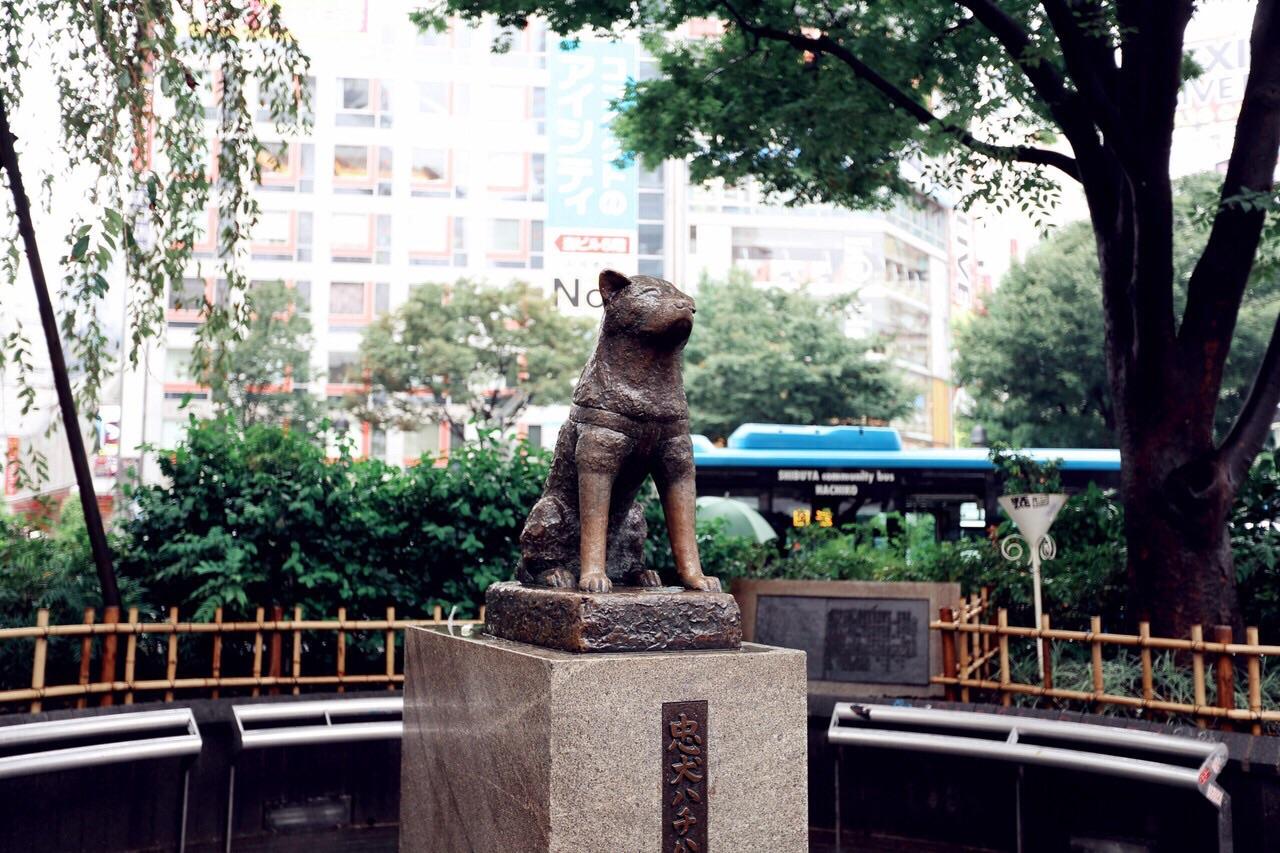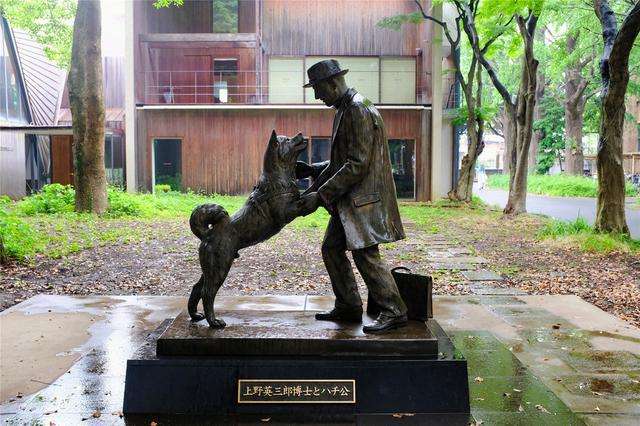The Shibuya statue of the loyal dog Hachiko tells a story about loyalty and love. In the hustle and bustle of the urban environment, the warmth of the spring breeze, the theme of small events,small people can meet the desire of civil society for human affection. Is Hachiko a true story? And where is the statue of Hachiko?
Yes, The loyal dog Hachiko is a legendary loyal dog in Japanese history. The breed is the Akita dog from Odate City, Akita Prefecture. Hachiko was brought to Tokyo by his owner Eisaburo Ueno in 1924. Every morning, Hachiko watched his master go to work at the door of his home, and then picked him home at the nearby Shibuya Station in the evening. One night, Eisaburo Ueno did not return to Shibuya Station as usual. He died of a heart attack while working. However, Hachiko remained faithfully in front of Shibuya Station for 9 years until his death on March 8, 1935.
In 1934, the statue of Hachiko at Shibuya Station was established, and the unveiling ceremony was attended by 300 celebrities.
Every March 8th, a grand memorial ceremony is held next to Shibuya Station. Thousands of dog owners come here to pay tribute to the loyal Hachiko. People were moved by its righteous deeds and called it "Hachiko".
It is considered the best place for people to wait for friends. Stand straight in front of the statue of Hachiko and wait. Quite a few of them are waiting for their lovers. Like Hachiko, they have no expressions on their faces, and they have no expressions when they wait because there are no distracting thoughts or they have lost their thoughts, so just wait anyway. Love does not need to be clever, but stupid; it does not need calculation, but loyalty.
Where is the statue of Hachiko?
1 Chome-2 Dogenzaka, Shibuya City, Tokyo 150-0043 Japan. Shibuya is an administrative district full of personality in Tokyo. Hachi's famous bronze statue is found right ahead of Shibuya Station's Hachiko Exit, which was named after him also .

Hachiko statue Shibuya station: Famous department stores, fashion specialty stores, restaurants, coffee shops, amusement facilities, and customs facilities are so densely packed that it is the same city as Shinjuku as a "24-hour sleepless street". The sculpture of Hachiko is located at the Hachiko exit of Shibuya Station. From then on, the entrance of the station near the bronze statue was called "Hachiko Entrance".
The process of building the Hachiko statue and is the Hachiko statue still standing?
1. Entrusted by the Japanese Dog Preservation Society, the famous sculptor Ando Zhao carved the first bronze statue of Hachiko. In 1934, a building ceremony for the bronze statue was held in front of Shibuya Station, and Hachiko himself also attended the ceremony. On March 8, 1935, the 11-year-old Hachiko died at the intersection on the north side of the Takizawa Hotel.
The statue did not escape in that turbulent era. During World War II, a large amount of metal was needed to make weapons and equipment, and the Hachiko statue was melted. It was rebuilt in August 1948. This is the one we see today. In addition, there is also a bronze statue cast in the same mold in front of Odate City Station, where he was born.
2. In May 2009, to commemorate the production of the American version of the film "The Story of the Faithful Dog Hachiko", a statue of the Hachiko was also erected in the Fuji TV Plaza in Odaiba, Tokyo. It is 88 centimeters tall and weighs 88 kilograms. Not only is the figure of height and weight good enough, but the cute cartoon style is also very flattering.
This statue was presented to Yamato City, Japan, and echoes the bronze statue of the Hachiko at Shibuya Station in Tokyo. It was placed near the Takaza Shibuya Station in Yamato City.
Bronze Statue of the Hachiko and the Master

On March 8, 2015, the 80th anniversary of the death of Hachiko, the University of Tokyo, Japan, set up a bronze statue of Hachiko and the host Dr. Eisaburo Ueno on the campus of the Department of Agriculture of the University of Tokyo (located in Bunkyo Ward, Tokyo) M), after lighting up at night, the shadow that emerged from the light looked like Hachiko was happily leaping towards the owner.
The master of Hachiko, Eisaburo Ueno (1871-1925), was a pioneer in agricultural civil engineering and was a professor at Tokyo Imperial University (now the University of Tokyo). Professor Ueno's descendants, professors of Tohoku University who study the relationship between animals and humans, started to collect donations from three years ago and set out to rebuild the "Hachiko" statue on campus. And the new bronze statue is no longer waiting alone for "Xiao Ba", but reproduces the appearance of Xiao Ba happily flying into the arms of the owner. The person concerned said that he wanted this bronze statue to become a symbol of the deep emotions between humans and animals.
Leave a message

Any landscape ideas in your mind, describe to D&Z sculpture team directly, you can imagine we can create.
Copyright © 1996-2024 D&Z Sculpture Co., Ltd. All Rights Reserved | Sitemap |